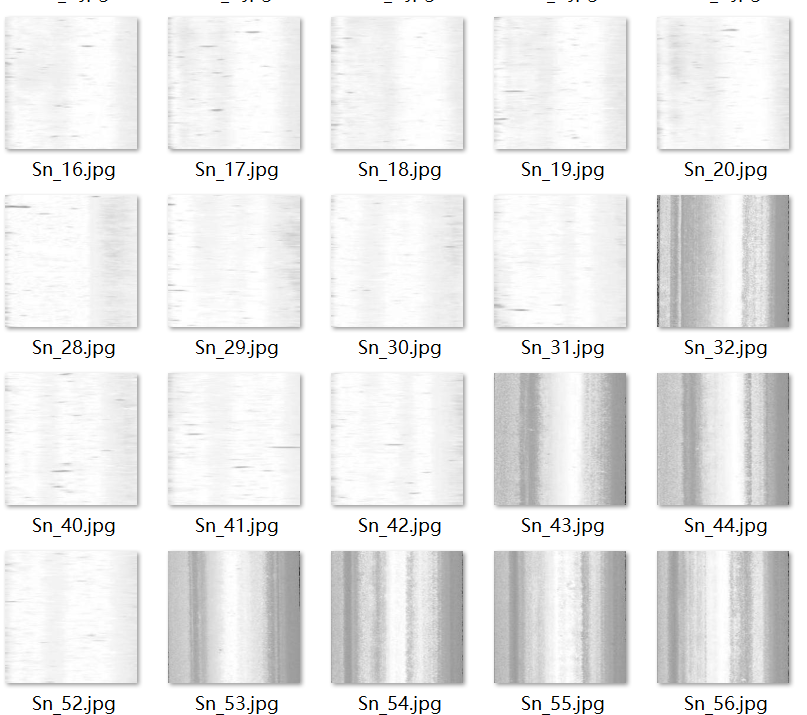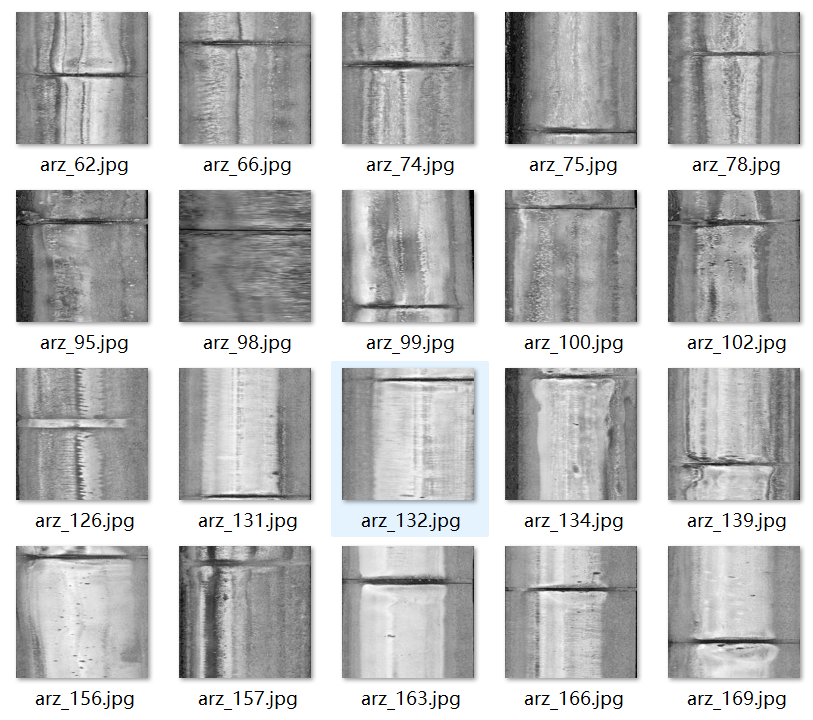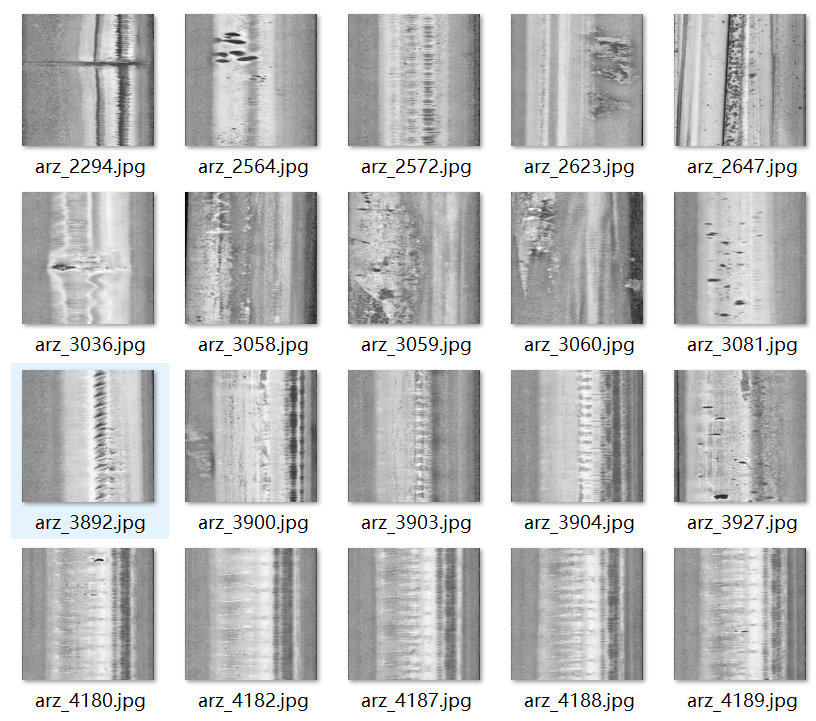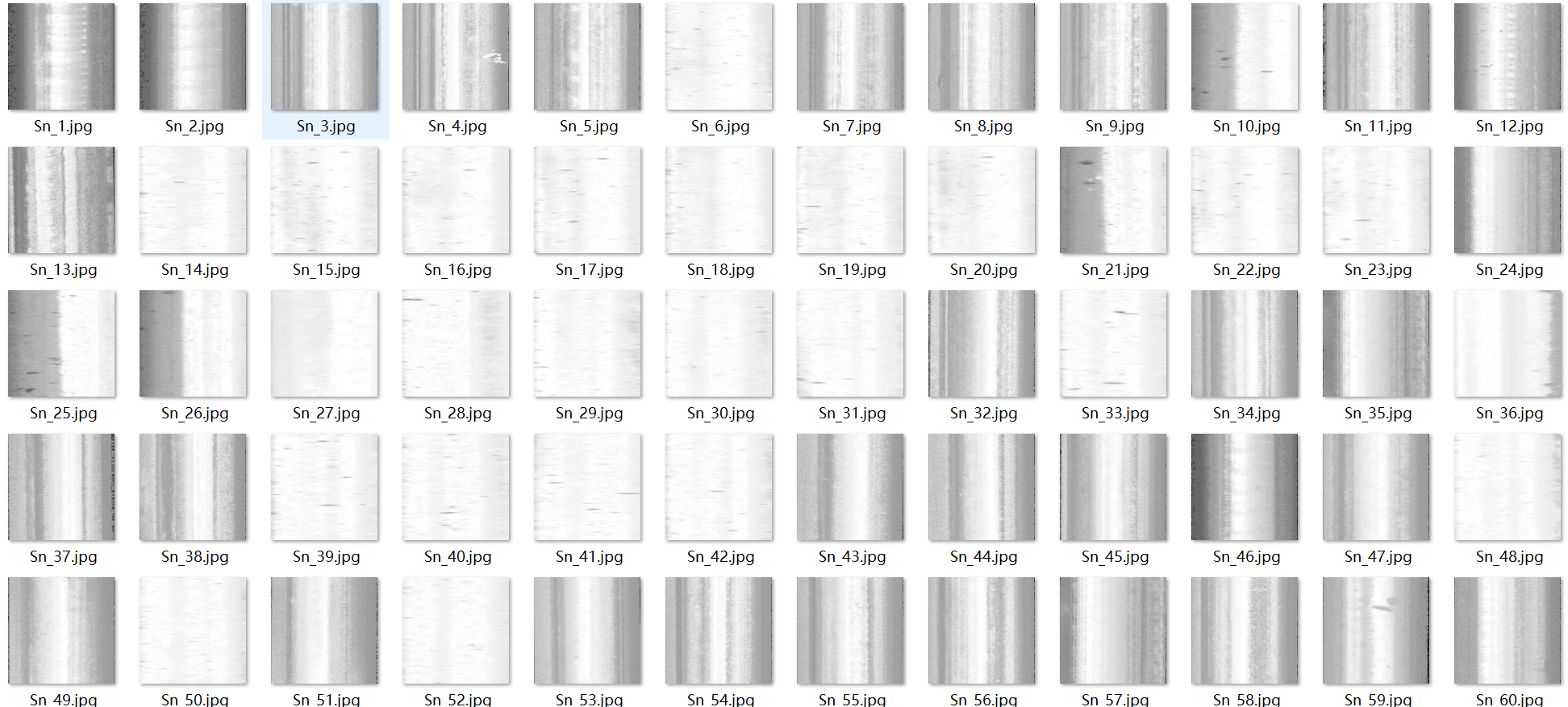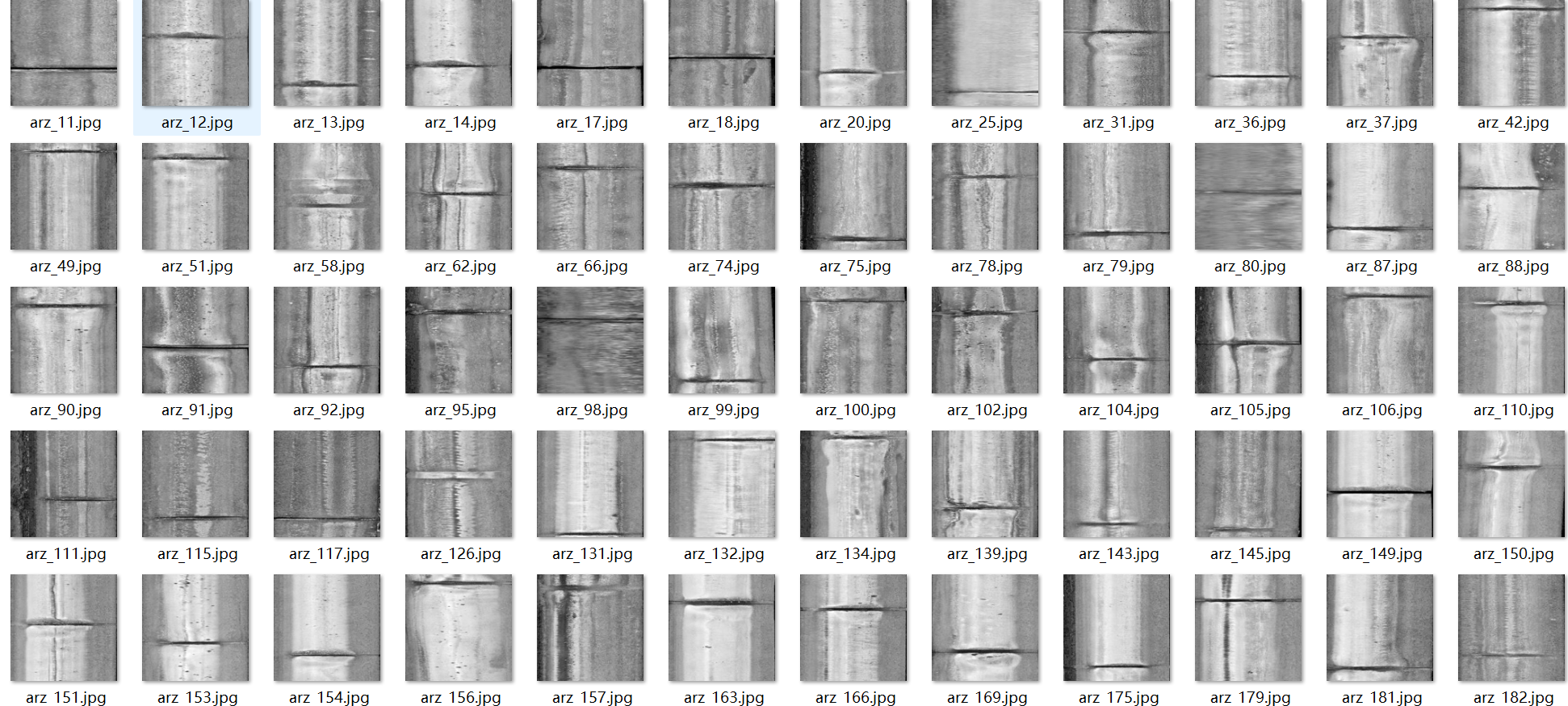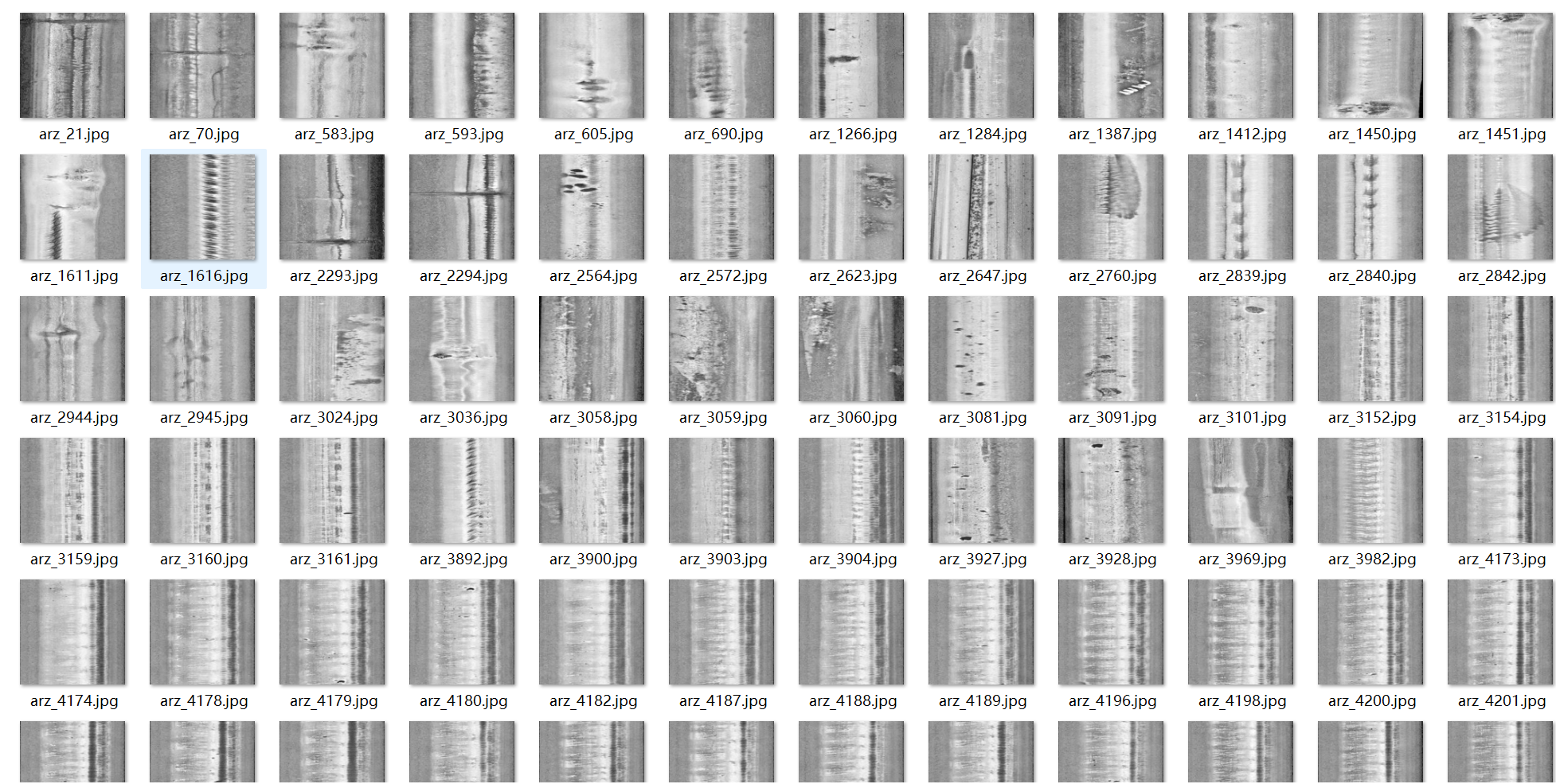写在前面:
首先感谢兄弟们的支持,让我有创作的动力,在创作过程我会尽最大能力,保证作品的质量,如果有问题,可以私信我,让我们携手共进,共创辉煌。
路虽远,行则将至;事虽难,做则必成。只要有愚公移山的志气、滴水穿石的毅力,脚踏实地,埋头苦干,积跬步以至千里,就一定能够把宏伟目标变为美好现实。
数据集如下所示:
1.介绍
钢轨表面缺陷检测是指通过使用各种技术手段和设备,对钢轨表面进行检查和测量,以确定是否存在裂纹、掉块、剥离、锈蚀等缺陷的过程。这些缺陷可能会对铁路运输的安全和稳定性产生影响,因此及时进行检测和修复非常重要。钢轨表面缺陷检测通常采用无损检测技术,如超声检测、涡流检测等,以确保在不损害钢轨的前提下进行准确的检测。
2.数据
钢轨表面缺陷数据通常包括缺陷的类型、位置、尺寸以及严重程度等信息。这些数据可以通过各种检测设备和技术获取,如激光扫描仪、高清相机等。这些数据对于评估钢轨的状态、制定维护计划以及确保铁路运输的安全具有重要意义。通过对这些数据的分析和处理,可以实现对钢轨表面缺陷的准确检测和分类,有助于提高钢轨维护的效率和安全性。
本次介绍的数据总共4个类别,分别为Healthy、Joint、Squats、SSquats
Healthy类别:492张
Joint类别:408张
Squats类别:608张
SSquats类别:330张
3.总结
钢轨是铁路轨道的主要部件,起引导列车运行和直接承受车辆载荷的重要作用。随着我国既有线路改造以及高速铁路的快速发展,列车对钢轨的运行压力以及冲击载荷越来越强,钢轨表面产生的缺陷概率也越来越大。因此,采集钢轨表面缺陷数据,并基于先进的算法进行检测,是保障铁路安全和稳定运行的重要手段,具有极其重要的意义。
早期钢轨缺陷检测的主要手段是人工物探,该方法不仅效率低下,且无法形成客观统一的检测标准,正逐渐被其他方法所取代.随后,超声波、射线、渗透、涡流等钢轨无损探伤技术的应用推动了检测精度和检测速度的相对提高,这些检测方法虽然穿透能力强、操作安全,但容易受到外部干扰影响,检测结果抽象且难以处理。基于机器视觉的钢轨缺陷检测方法通过先进的视觉设备采集钢轨表面图像,根据算法对图像进行处理,具有实时性、非接触式等特点,能够很好地运用于钢轨缺陷检测领域。闵永智等提出了将平滑滤波器与阈值分割相结合的钢轨表面缺陷检测方法,减轻了光照变化、轨面不平对检测结果的影响,但该方法对背景图像的自适应平滑过程运算量过大,实时性不强。Shi等针对光照及环境变化造成钢轨图像降质的问题,提出了一种基于边缘检测算子改进的钢轨缺陷检测算法,改进后的算法可获得具有完整边缘信息的缺陷轮廓定位,但对复杂钢轨图像的检测准确率较低。Tastimur等提出了一种基于形态学特征提取的铁路缺陷检测算法,利用霍夫变换和图像处理技术对实时摄像机获取的钢轨图像进行检测,并通过形态学操作提取采集到的钢轨图像特征,实现对缺陷的识别,但复杂的图像预处理过程容易受到光照不均等外部因素的影响,造成一定程度的漏检.上述研究将传统图像处理技术与机器学习的方法相结合,设计了适用于特定场景下的钢轨缺陷检测方法,该类方法的检测性能易受外部环境的影响,检测速度难以满足实时检测要求。
Steel rails are the main components of railway tracks, playing an important role in guiding train operation and directly bearing vehicle loads. With the renovation of existing railway lines and the rapid development of high-speed railways in China, the operating pressure and impact load of trains on steel rails are becoming stronger, and the probability of defects on the surface of steel rails is also increasing. Therefore, collecting data on rail surface defects and detecting them based on advanced algorithms is an important means to ensure the safety and stable operation of railways, and has extremely important significance.The main method of early rail defect detection was manual geophysical exploration, which was not only inefficient but also unable to form objective and unified detection standards. It was gradually replaced by other methods. Subsequently, the application of non-destructive testing technologies such as ultrasound, radiation, penetration, and eddy current for steel rails has promoted the relative improvement of detection accuracy and speed. Although these detection methods have strong penetration ability and safe operation, they are easily affected by external interference, The detection results are abstract and difficult to process. The machine vision based rail defect detection method collects rail surface images through advanced visual equipment and processes the images based on algorithms. It has real-time and non-contact characteristics and can be well applied in the field of rail defect detection. Min Yongzhi et al. proposed a rail surface defect detection method that combines smooth filters with threshold segmentation, reducing the impact of lighting changes and uneven rail surface on the detection results. However, this method requires too much computation for the adaptive smoothing process of background images and lacks real-time performance. Shi et al. proposed an improved rail defect detection algorithm based on edge detection operator to address the issue of degraded rail images caused by lighting and environmental changes. The improved algorithm can obtain defect contour localization with complete edge information, but the detection accuracy for complex rail images is low. Tastimur et al. proposed a railway defect detection algorithm based on morphological feature extraction, which utilizes Hough transform and image processing technology to detect real-time camera captured rail images, and extracts collected rail image features through morphological operations to achieve defect recognition. However, complex image preprocessing processes are easily affected by external factors such as uneven lighting, Causing a certain degree of missed detection. The above research combines traditional image processing techniques with machine learning methods to design rail defect detection methods suitable for specific scenarios. The detection performance of these methods is easily affected by external environments, and the detection speed is difficult to meet real-time detection requirements.
4. 数据集获取
数据集,获取方式请看下面。
本数据集请扫码关注下方的公众号并添加公众号小编vx,另提供远程搭建环境、手把手指导、GPU训练模型服务,价格可谈,详细信息请扫码联系小助理。
